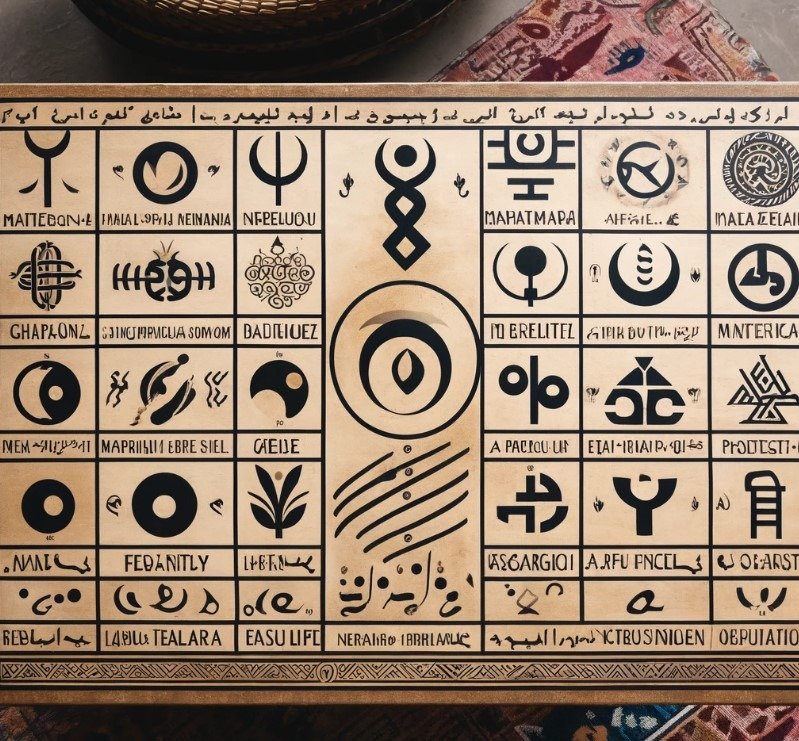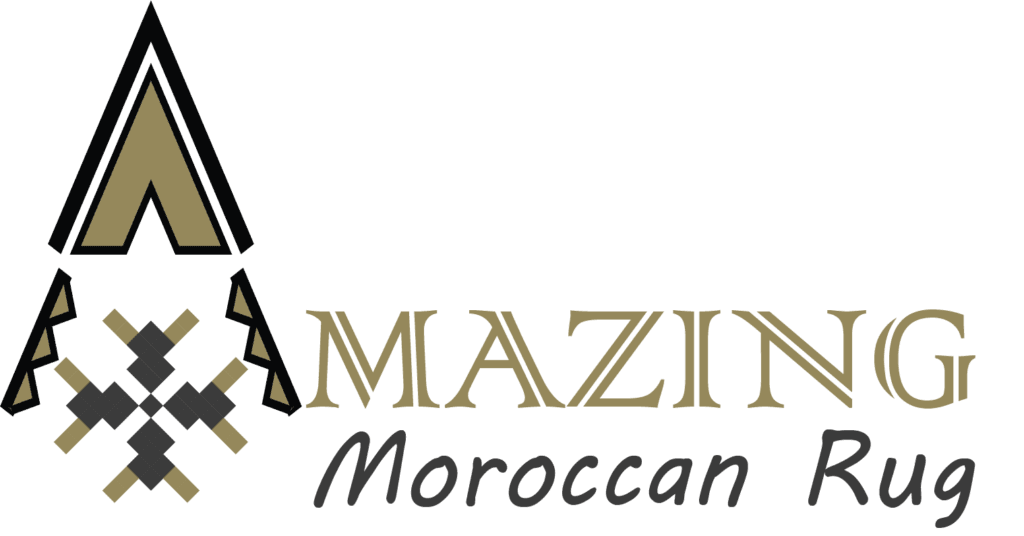Customer Reviews | Contact | FAQ
Berber Symbols : Meaning & History Behind Moroccan Rug Designs
Moroccan Berber rugs are more than just decorative pieces; they are woven stories, filled with ancient Berber symbols that carry deep cultural and spiritual meanings. The Berber tribes of Morocco, particularly the Amazigh people, have used these symbols for centuries to convey messages of protection, fertility, nature, and life’s journey.
In this article, we’ll explore the most common Berber symbols, their meanings, and how they add a unique narrative to Moroccan rugs.

🌀 The Importance of Berber Symbols in Moroccan Rugs
Berber rugs are traditionally woven by women who embed personal stories and beliefs into the patterns. Each symbol has a specific meaning, often related to spirituality, protection, femininity, or daily life. These symbols vary across different Berber tribes, but many share common themes.
🔷 10 Common Berber Symbols & Their Meanings
1️⃣ The Diamond (⧫) – Protection & The Evil Eye
The diamond shape is one of the most iconic Berber symbols, representing protection against the evil eye. It is believed to ward off bad energy and keep the home safe.
2️⃣ The X Shape (𐌗) – Woman & Fertility
This symbol represents a woman’s body and fertility. Many Berber rugs feature repeated X patterns, symbolizing motherhood, strength, and life-giving power.
3️⃣ Zigzag Lines (~~~~) – Water & Life
Zigzags symbolize water, a sacred element in Berber culture. Since many Moroccan regions are arid, water is associated with life, renewal, and survival.
4️⃣ The Ladder (╫) – Growth & Spirituality
This symbol resembles a ladder or steps, representing progress, personal growth, and spiritual ascension. It often appears in rugs as a repeated motif.
5️⃣ The Eye (👁) – Protection Against Evil
The eye symbol is another powerful protection motif. It is believed to ward off the evil eye, bringing good luck and safety to the home.
6️⃣ Triangles (▲) – Strength & Family
Triangles, often seen in Beni Ourain rugs, symbolize stability, strength, and family unity. When inverted (▽), they can represent femininity and birth.
7️⃣ The Cross (✚) – Balance & Harmony
The cross is not a religious symbol in Berber culture but rather represents the four directions (North, South, East, West) and the balance between different elements in life.
8️⃣ The Snake (S) – Wisdom & Transformation
A wavy snake-like symbol represents wisdom, rebirth, and transformation. It is inspired by the natural cycle of snakes shedding their skin.
9️⃣ The Star (✴) – Guidance & Protection
The star is a symbol of guidance, divine energy, and hope. It reflects the nomadic lifestyle of the Berbers, who often relied on the stars for direction.
🔟 The Hand (𓂀) – The Hand of Fatima (Khamsa)
The Khamsa (Hand of Fatima) is a famous Berber symbol that signifies protection, good fortune, and blessings. It is commonly found in Moroccan textiles and jewelry.
🧵 How Berber Symbols Influence Moroccan Rug Designs
Each Berber rug is unique, carrying a story or spiritual message woven into its patterns. Depending on the tribe and region, these symbols can appear in different styles:
Beni Ourain Rugs – Feature geometric patterns like diamonds and zigzags in a minimalistic, monochrome style.
Azilal Rugs – Known for vibrant colors and playful abstract patterns.
Boucherouite Rugs – Made from recycled fabrics, with bold, free-form designs inspired by personal stories.
🌍 The Cultural Legacy of Berber Symbols
Berber rug-making is a centuries-old tradition, passed down from mothers to daughters. Today, Moroccan rugs are global design treasures, yet they still carry deep cultural significance.
By owning a genuine Moroccan Berber rug, you’re not just adding a stylish piece to your home—you’re bringing in a woven story of heritage, spirituality, and artistry.
🛍️ Looking for Authentic Moroccan Rugs with Berber Symbols?
Discover our handwoven collection at Amazing Moroccan Rug and bring home a piece of Moroccan history!


